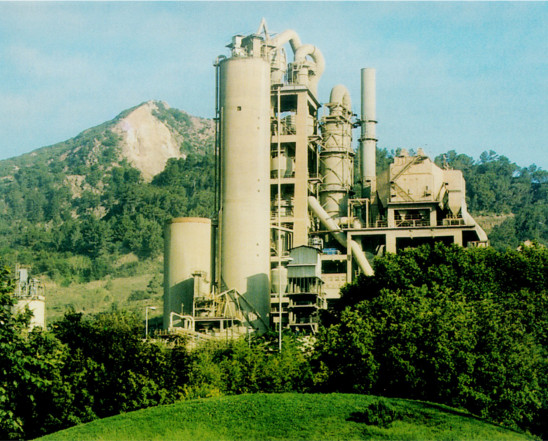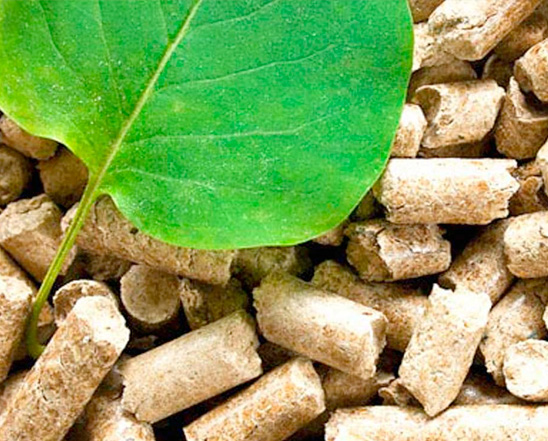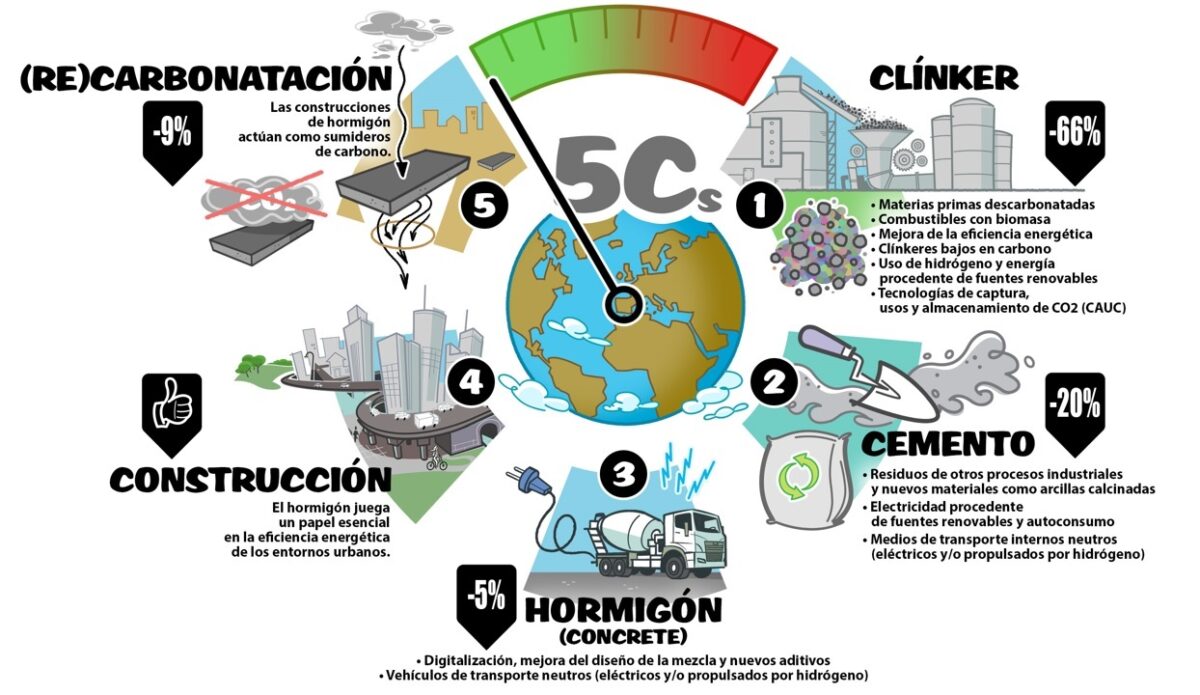CLIMATE CHANGE
Progressing towards new standards that will enable us to align ourselves with a low-carbon economy
In our awareness of the carbon footprint left by our activity, we in the cement industry accept our responsibility accomplishing the targets set regarding emission reduction, while at the same time showing ongoing improvement through external audits conducted by accredited bodies.
Spanish cement plants have the best available techniques (BATs) for the prevention and control of pollution in the cement manufacturing process.
Spheres of activity
Our climate change strategy has three spheres of activity:
Contributing to the reduction of society’s global emissions
Through construction solutions that improve energy efficiency in buildings, for example.
Reducing our emissions per tonne of cement
Through industrial performance programmes and R&D&I for developing low-carbon solutions and by using waste as a fuel or as an alternative raw material.
Promoting responsible energy and climate policies
In industry and Public Authorities. There is also a growing interest in reducing effects, by also adapting to the consequences. Concrete is a very resilient material in extreme climate conditions and our product design is optimised to develop concretes capable of withstanding their effects.
Our commitment to reducing emissions

INCREASING EFFICIENCY
Cement manufacturing plants in Spain are equipped with the BATs to increase their efficiency and are among the most efficient in the world.

UTILISING BIOMASS
In 2015, thanks to the use of biomass, the Spanish cement sector prevented the emission of CO2 equivalent to the average annual emissions of 470,000 automobiles, which amounts to over 2% of the cars in our country.

PERCENTAGE OF REPLACEMENT WITH ALTERNATIVE FUELS
The percentage of replacement with alternative fuels in 2015 was 23.4%, giving rise to a reduction of 11.5% of CO2 in combustion, which means that 705,000 tonnes of CO2 less was released into the atmosphere.
The roadmap to achieve climate neutrality by 2050
The European Green Deal creates a blueprint for a European society that is climate neutral, innovative, forward looking, fair and circular. It outlines a Union where citizens, industry and biodiversity can thrive. It identifies climate change as one of the major societal challenges and consolidates all elements of a possible solution into a single visionary ambition.
The Green Deal also envisions a European society in 2050 that will be more urbanised, more connected, automated and smarter. That society will need cement and concrete to address its needs.
The Green Deal explicitly recognises the cement industry as one of the industries that is essential for the EU economy as it supplies several key value chains. It further identifies the construction sector as one of the key focus points for the circular economy action plan, promises a new initiative on renovation, emphasises the importance of sustainable product policies and announces a biodiversity strategy. The cement industry is ready to play its role, especially when it comes to making the circular economy work.
In our roadmap we explain how with specific policies aligned with the “European Green Deal” and the “2030 Agenda”, based on circularity and the life cycle of products, we can position the cement industry as the engine of change towards a more sustainable way of building.
In this document, we explain how, by acting at every stage of the value chain, deep CO2 emission cuts can be achieved to lead to carbon neutrality. In striving for this goal, the cement industry is optimistic on driving down its manufacturing emissions. We are also pleased to be recognised as an essential supplier of a product that is bringing value to society over its entire value chain.
The sectorial strategy of this roadmap is based on the “5Cs Approach”, which promotes the collaboration of the entire value chain of the cement industry: Clinker-Cement-Concrete-Construction- (re) Carbonation. For each of the 5Cs, we have been identifying the areas in which emissions can be significantly reduced, the key technologies that will allow us to do so, as well as the necessary support to drive this transformation.
The 5C Approach

